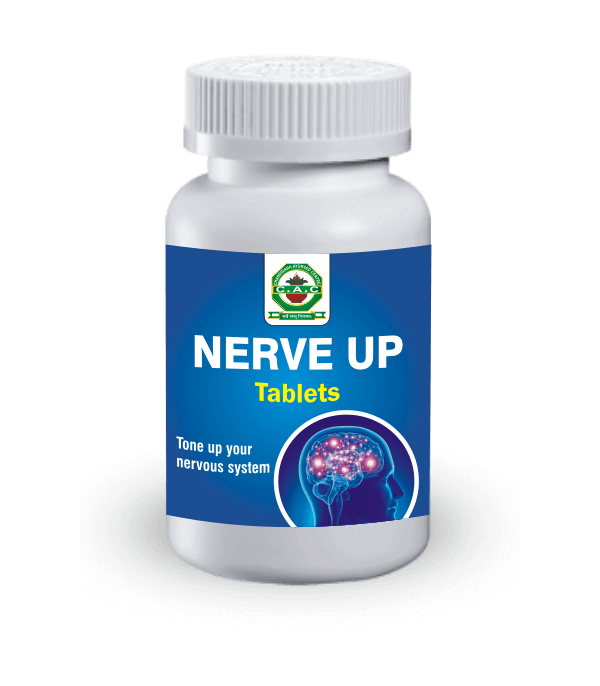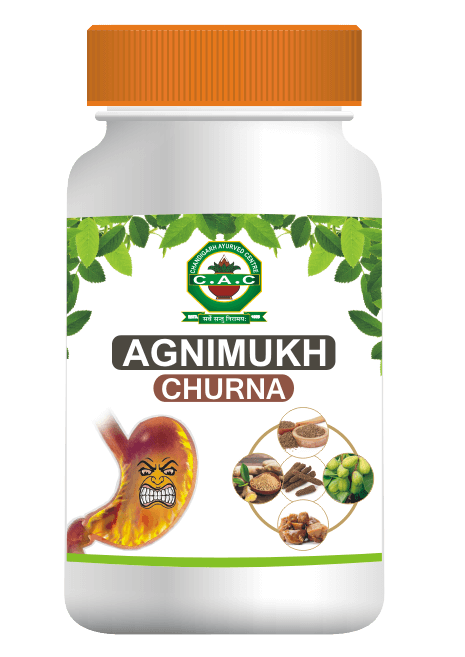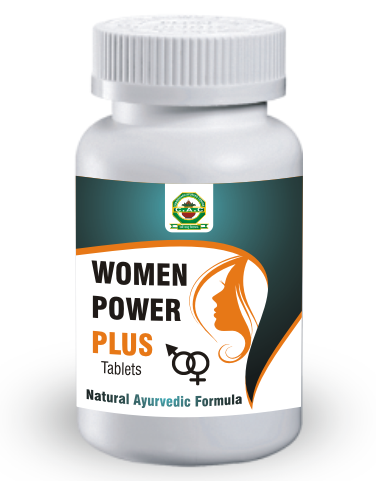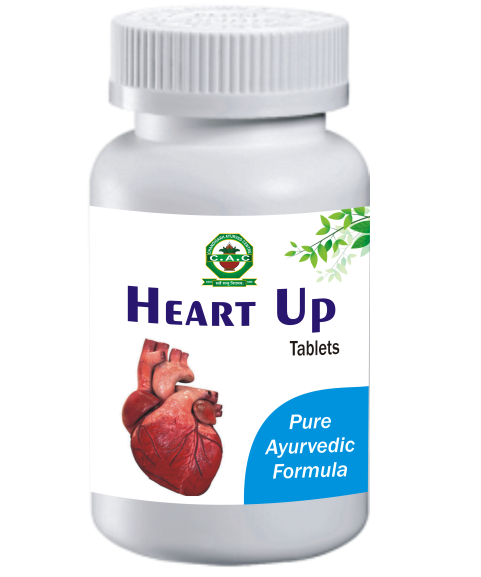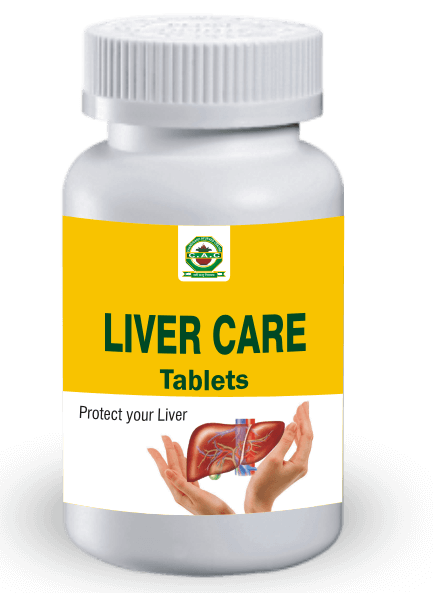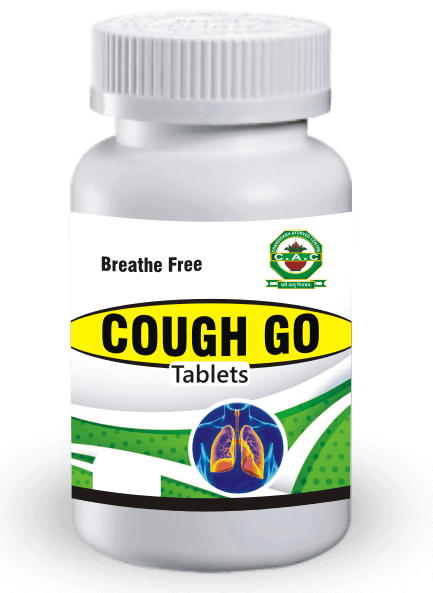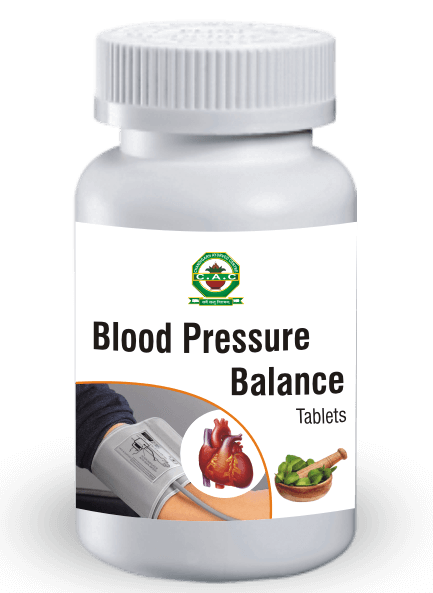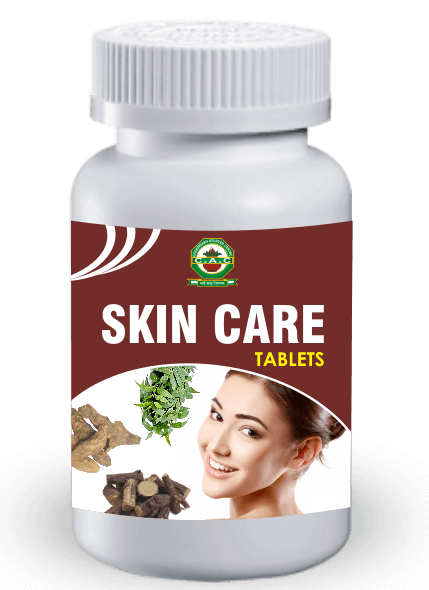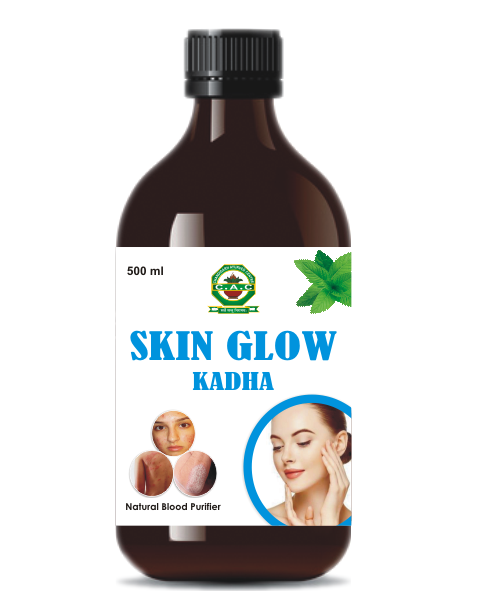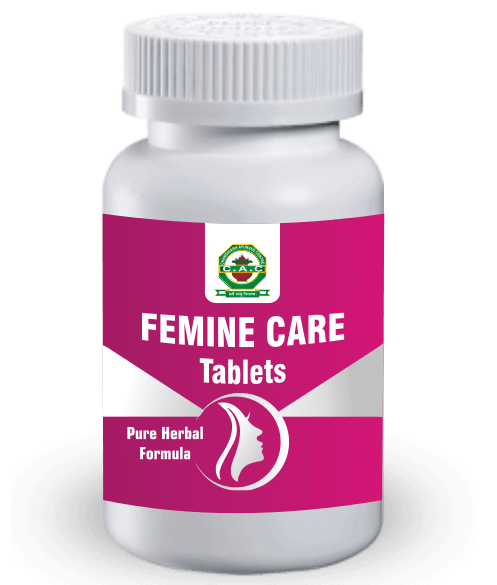Author Archives: Dr. Vaidya Karanvir Singh
NERVE UP TABLETS
- December 27, 2022
- Posted by Dr. Vaidya Karanvir Singh
- 0 Comment(s)
These tablets are herbo-mineral tablets and are purely ayurvedic formulation. Nerve up tablets helps to balance vata doshas in the body. It also helps in reduction of kapha dosha and acts as nervine stimulants. Nerve up tablets effectively improve the central nervous system. The ingredients of Nerve up tablets like shudha shilajeet, kuchala , abhrak bhasma, praval pishti, shank bhasma etc have natural vatahar properties and in treatment of vata disease.
Ingredients of Nerve up tablet are :
- KUCHALA : It is used after its purification. Kuchala is katu and tikta in rasa with ushna virya. It act as kapha and vata pacifier. It also act as nervine tonic.
- SHUDHA SHILAJEET : It is a sticky tart like substance exuded from rocks present in the Himalayas. It is helpful in nourishment and rejuvenation of body tissues.
- RAS SINDOOR : It is a combination of shuddha parada and shuddha gandhaka. It boost immune system. improves strength and digestive system.
- ABHRAK BHASMA : It is an ayurvedic medication that is prepared from mica. It is used as rejuvenating agent to treat brain and neuro-psychiatric disorders.
- PARVAL PISHTI : It is an ayurvedic medication prepared from corals. It helps in improvement of immunity as well as provide body with natural calcium.
- SHANKH BHASMA : It is prepared from the conch shell. It provide body with natural calcium and vitamin-C.
Uses of Nerve up tablet :
- Acts as CNS stimulant: speed up physical and mental processes.
- Respiratory stimulant
- Acts as convulsant: producing sudden and involuntary muscle contractions.
- Prevents periodic returns of the disease.
- Joint pain
- Inflammation
- Stiffness
- Gout
- Arthritis
- Swelling in joints
- Body ache
- Erectile dysfunction.
- Body weakness
- Insomnia
Compared to NERVE UP tablets the allopathic counterpart is Neurobion forte
Neurobion forte is a supplement that contain a mixture of different B vitamins . It is available in oral form as well as injection form. It contain mixture of six B vitamins :
- VITAMIN-B1 (THAIMINE) : It is essential for metabolism of carbohydrates and maintain nerve fibers.B1 is involved in nerve impulse conduction.
- VITAMIN-B2 ( RIBOFLAVIN) : Helps in metabolism of fats , carbohydrates and proteins. It is required for RCB formation and antibody production.
- VITAMIN-B3 (NICOTINAMIDE ) : It is used to treat hyperlipidemia, dyslipidemia, hypertriglyceridemia .
- VITAMIN-B5 (CALCIUM PANTOTHENATE ): It is used in the synthesis of Coenzyme A and protect cells against peroxidative.
- VITAMIN-B6 (PYRIDOXINE) : It play essential role in enzymatically controlled neurotransmitter metabolism. It helps in protein and amino acid metabolism and formation of neurotransmitter
- VITAMIN-B12 (COBALAMIN) : It play role in maturation of cells and helps to maintain nerve cell integrity.
Side Effects of Neurobion Forte :
- Diarrhea
- Nerve Damage
- Lose control of body movements
- Excessive urination
- Constipation
- Vomiting
- Nausea
- Stomach upset
- Blurred vision
- Allergic reaction in rare cases
Drug Interaction.
Neurobion Forte may interact with amino acids , heavy metal antagonist, vasodilators, anti-tuberculosis drugs ,diuretics.
CAC AGNIMUKH CHURNA
- December 24, 2022
- Posted by Dr. Vaidya Karanvir Singh
- 0 Comment(s)
CAC Agnimukh churna is a purely herbal formulation which is considered as an appetizer and digestive stimulant. It helps in maintaining gut health. It contains herbs such as sonth, safed jeera, kala namak, sendha namak, nimbu satva, etc. All these herbs help in improving bowel movements, increase digestive fire and help in balancing kapha and vata doshas. It is very beneficial in the following problems like loss of appetite, bloating, flatulence, acidity, abdominal pain, anorexia, etc.
WHAT ARE THE INGREDIENTS OF CAC AGNIMUKH CHURNA?
Following are the ingredients of CAC Agnimukh churna:
- Safed jeera (Cuminum cyminum)
- Sonth (Zingiber officinale)
- Sendha namak (Rock salt)
- Kala namak (Black salt)
- Kali mirch (Piper nigrum)
- Nimbu satva (Citric acid)
- Peppermint (Mentha piperita)
WHAT ARE THE USES AND PROPERTIES OF DIFFERENT HERBS OF CAC AGNIMUKH CHURNA?
Each herb is loaded with different properties and thus has different functions. Following are the properties of different herbs which are present in CAC Agnimukh churna:
SONTH
Ginger has anti-inflammatory properties. It helps in increasing metabolism of body as it contains thermogenic agents. It thus helps in burning fat. It is loaded with various nutrients which help in stimulating digestion. It is very helpful in maintaining gut health and eliminates excessive gas in the intestine. It is good for liver health also.
SAFED JEERA
Safed jeera contains antioxidants, vitamins A & C, copper and manganese. It contains a chemical called thymol which stimulates pancreas to produce more enzymes and bile juice. Thus jeera helps in improving overall digestion of fats, carbohydrates within the body. It also increases salivation and increase digestive enzyme secretion from gastric glands.
PEPPERMINT
Peppermint is an aromatic plant which is used to add aroma and flavor to the food. It relaxes the muscles of stomach and improves the circulation of bile. It is given for curing indigestion, flatulence and nausea. It helps in proper digestion of food and relieves constipation.
SENDHA NAMAK
Rock salt is a very good home remedy for the digestive problems. It contains various vitamins and minerals. It helps in increasing metabolism of body, removes toxic substances from the intestine and promotes bowel movements. It helps in increasing bowel movements.
WHAT ARE THE USES OF CAC AGNIMUKH CHURNA?
CAC Agnimukh churna is used in the following health conditions:
- Abdominal bloating
- Indigestion
- Pain in abdomen
- Loss of appetite
- Acid reflux
- Excessive formation of gas
- Discomfort in abdomen
- Abdominal spasms
- Spleen disorders
DRUGS FOR DIGESTIVE PROBLEMS IN ALLOPATHY ALONG WITH THEIR SIDE EFFECTS
Here are some of the drugs which are used for the treating digestive problems:
ANTACIDS
Antacids are the medicines which neutralizes acid in stomach, thus are called antacids – anti, acids. There are different types of antacids available in market like aluminium hydroxide, magnesium carbonate, magnesium trisilicate, etc. They are very helpful in relieving indigestion, acidity and stomach ulcers.
Side effects:
- Flatulence
- Diarrhea
- Constipation
- Nausea and vomiting
PROTON PUMP INHIBITORS
Proton pump inhibitors are the medicines which help in inhibiting the secretion of gastric juice. These medications are given for the treatment of acid reflux, heartburn, GERD and stomach ulcers. Some of the commonly used proton pump inhibitors are omeprazole, rabeprazole, pantoprazole, etc.
Side-effects:
- Headache
- Diarrhea
- Constipation
- Itching
- Nausea
HISTAMINE 2 BLOCKERS
Histamine 2-blockers decrease the amount of acid formation in stomach. There are histamine receptors present in stomach which help in production of hydrochloric acid. H2-blockers bind to these receptors and thus inhibit the secretion of acid. They are used for the treatment of gastric and duodenal ulcers, acidity, indigestion, etc. Cimetidine, famotidine are some of the H2-blockers.
Side effects:
- Dizziness
- Loss of appetite
- Nausea
- Diarrhea
- Confusion
CAC WOMEN POWER PLUS TABLETS
- December 24, 2022
- Posted by Dr. Vaidya Karanvir Singh
- 0 Comment(s)
CAC Women power plus tablets are purely herbal medications which are made up of different types of herbs. It is very good for overall female health and works well in female reproductive system. It helps in boosting immunity of body. The tablets can be taken by girls aged 17 years to old women. The various herbs which are present in CAC Women power plus tablets are ashoka, anantmool, shatavari, etc. All these are used since ancient times for maintaining good female health and female health problems.
WHAT ARE THE INGREDIENTS OF CAC WOMEN POWER PLUS TABLETS?
Following are the herbs which are present in CAC Women power plus tablets:
- Ashoka chhal (Saraca asoca)
- Shatavar (Asparagus racemosus)
- Ashwagandha (Withania somnifera)
- Giloy (Tinospora cordifolia)
- Anantmool (Hemidesmus indicus)
- Chandan (Santalum album)
- Jeera (Cuminum cyminum)
- Safed musli (Asparagus adscendens)
- Dhayphool (Woodfordia fruiticosa)
- Palash phool (Butea monosperma)
- Brahmi (Bacopa monnieri)
- Jatamansi (Nardostachys jatamansi)
- Rajah pravartini vati
- Kukkutandtwak bhasm
PROPERTIES OF DIFFERENT INGREDIENTS OF CAC WOMEN POWER PLUS TABLETS
Different herbs are loaded with different properties. Following are the properties of different ingredients of CAC Women power plus tablets:
ASHOKA
Ashoka has been used since times immemorial for the management of various menstrual and gynecological problems. It helps in maintaining irregular menstrual cycle, abdominal pain and cramps. It controls internal bleeding and heals wounds. It is very beneficial for heavy bleeding during menstruation and also good in scanty blood flow during periods.
ASHWAGANDHA
Ashwagandha helps in balancing of female hormones such as estrogen, progesterone levels in blood. It normalizes cortisol levels and thyroid levels in blood. It acts as a natural stress reliever and improves memory and cognitive function. It increases female libido. It is very beneficial for managing the symptoms of premenstrual syndrome and menopausal symptoms.
SHATAVAR
Shatavar is a herb which works wonders for female health related problems. It helps in maintaining hormonal balance and is thus very beneficial in conditions like polycystic ovarian disease (PCOD) and infertility. It increases the production of prolactin hormone which is very important for breastfeeding. It also helps in managing the symptoms of menopause like hot flashes, etc.
GILOY
Giloy is a good blood purifier and removes toxins from the body. It helps in increasing immunity of body and treats urinary tract infections. It has been found very beneficial in cases of infertility.
CHANDAN
Sandalwood has anti-inflammatory and antibacterial properties. It is antispasmodic in nature and provides relief in uterine spasms and contractions. It is a great mood enhancer as it increases the production of serotonin hormone.
WHAT ARE THE USES OF CAC WOMEN POWER PLUS TABLETS?
CAC Women power plus tablets are useful in the following conditions:
- Menopausal symptoms like hot flashes, mood swings, etc
- Irregular menstrual cycle like amenorrhea, dysmenorrhea
- Abdominal pain during menstruation
- Whitish discharge from vagina – leucorrhea
- Hormonal imbalance
- General weakness
- Excessive menstrual bleeding
DRUGS WHICH ARE GIVEN FOR FEMALE HEALTH PROBLEMS IN ALLOPATHY AND THEIR SIDE EFFECTS
Here are some of the drugs which are given in allopathy for female health problems:
ETHINYL ESTRADIOL
Ethinyl estradiol is a female hormone estrogen which works as an oral contraceptive. It prevents ovulation that is the release of egg from ovary, prevents implantation and makes the cervical mucus thick for preventing the entry of sperm inside the uterus. It is prescribed in conditions like premenstrual syndrome, acne, breast tenderness, weight gain and anxiety.
Side effects of ethinyl estradiol:
- Nausea
- Numbness
- Weakness
- Vaginal bleeding
- Breast cancer
- Uncontrolled blood pressure
- Kidney disease
TRANEXAMIC ACID
Traxenamic acid is very beneficial for controlling heavy bleeding during periods. It prevents enzymes in body from breaking down clots of blood. Thus, it is used to prevent bleeding.
Side effects of tranexamic acid:
- Confusion
- Vision problems
- Headache
- Numbness
- Weakness
- Drowsiness
- Diarrhea
LYSTEDA
Lysteda is an artificial preparation of an amino acid called lysine. It is very useful for treating heavy flow of blood during menstruation. Thus, it is given in cases of menorrhagia.
Side effects of lysteda:
- Numbness
- Body weakness
- Difficulty in breathing
- Migraine
- Swelling in legs
- Increased heart rate
- Lack of concentration
- Abdominal pain
- Confusion
CAC HEART UP TABLETS
- December 24, 2022
- Posted by Dr. Vaidya Karanvir Singh
- 0 Comment(s)
CAC Heart up tablets are an ayurvedic formulation which help in improving the functioning of heart and balancing the excessive amount of vata, pitta and kapha doshas. Heart is the most important organ of our body. It is nearly the size of a fist and weighs about 280 to 340 grams. It pumps oxygenated blood throughout the body and supplies oxygen and nutrients to each and every cell. It helps in removing carbon-dioxide and other wastes from the tissues. Due to unhealthy lifestyle and bad eating habits, the chances of contracting heart diseases get increased. There are increased numbers of deaths due to heart attacks. Difficulty in breathing, arrhythmia, dizziness, fainting are some of the common symptoms of heart problems.
WHAT ARE THE INGREDIENTS OF CAC HEART UP TABLETS?
The different types of ingredients which are present in CAC Heart up tablets are:
- Arjuna (Terminalia arjuna)
- Lahsun (Allium sativum)
- Dalchini (Cinnamomum zeylenicum)
- Kantkari (Solanum surattense)
- Shalparni (Desmodium gangeticum)
- Gokhru (Tribulus terresteris)
- Jatamansi (Nardostachys jatamansi)
- Manjishtha(Rubia cordifolia)
- Akik pishti
- Moti pishti
- Abhrak bhasm
WHAT ARE THE PROPERTIES OF DIFFERENT INGREDIENTS OF CAC HEART UP TABLETS?
Every herb has different composition and thus unique in its properties:
ARJUNA
Arjuna tree is widely available in India. It is loaded with various medicinal properties such as antimicrobial, anti-inflammatory and antioxidant properties. It helps in strengthening and toning of heart muscles. It improves the working of heart and improves blood circulation. It is a very herb for treating hypertension as it lowers increased blood pressure.
LAHSUN
Garlic has a good effect on digestive system and cardiovascular health. It is rich in antioxidant properties and is anti-inflammatory in nature. It fights free radicals and prevents cell damage. It regulates cholesterol levels in blood and helps in lowering blood pressure. It reduces plaque build up inside the walls of arteries.
DALCHINI
Dalchini is used in Indian cuisine for its special aroma and taste. However, it is well known for its medicinal properties. Dalchini has anti-inflammatory and antibacterial properties. It helps in checking the amount cholesterol and triglycerides in blood and thus helps in prevention of cardiovascular disease.
JATAMANSI
Jatamansi is cardioprotective in nature. It helps in maintaining rhythm of heart and is given in cases of arrhythmia. It works on cardiovascular system and nervous system. It has very good results in patients of hypertension.
GOKHRU
Gokhru has antioxidant and diuretic properties. It prevents damage to the heart muscles and strengthens them. It removes debris and cholesterol from the heart muscles. It helps in preventing atherosclerosis. It removes excessive fluid from body and thus beneficial in hypertension.
WHAT ARE THE BENEFITS OF CAC HEART UP TABLETS?
CAC Heart up tablets are useful in the following conditions:
- Blockage of arteries
- Hypertension
- Viral infections of heart
- Coronary artery disease
- Promotes overall heart health
DRUGS GIVEN IN ALLOPATHY FOR HEART PROBLEMS ALONGWITH THEIR SIDE EFFECTS
Here are some of the medicines which are given for treatment of heart problems:
STATINS
Statins help in lowering of cholesterol levels in blood. They are also anti-inflammatory in nature and thus help in reducing inflammation in the blood vessels. They are mostly prescribed to patients of heart attack, stroke, bypass surgery, etc.
Side effects:
- Dizziness
- Headache
- Fatigue
- Diarrhea or constipation
- Indigestion
- Feeling sick
CALCIUM CHANNEL BLOCKERS
The calcium channel blockers relax muscles of blood vessels, thereby causing dilatation. They help in slowing heart rate. They are mostly preffered for older people. The drugs which come under calcium channel blockers are amlodipine, diltiazem, etc.
Side effects:
- Headache
- Nausea
- Constipation
- Dizziness
- Rashes
- Flushing
ANGIOTENSIN-CONVERTING ENZYME (ACE) INHIBITORS
These drugs are vasodilators and thus, help in broadening of blood vessels. They lower the deposition of cholesterol along the walls of arteries and prevent narrowing of blood vessels. Some of the ACE inhibitors are lisinopril, benazepril, captopril, etc.
Side effects:
- Fatigue
- Dry cough
- Increased levels of potassium in blood
- Headache
- Dizziness
DIURETICS
These drugs are also known as water pills. They are often the first medicine used for treating high blood pressure. They remove sodium and water from the body, thereby normalizing the blood pressure. Some of the diuretics which are used for treating blood pressure are hydrochlorthiazide, chlorthalidone, etc.
Side effects:
- Increased urination
- Decrease in potassium levels (hypokalemia)
CAC LIVER CARE TABLETS
- December 24, 2022
- Posted by Dr. Vaidya Karanvir Singh
- 0 Comment(s)
CAC Liver care tablets are an ayurvedic formulation which help in maintaining proper functioning of liver. According to Ayurveda, our body consists of three doshas – vata, pitta and kapha. When the tridosha are present in harmony, then a person is physically as well as mentally healthy. But if any of the dosha gets disturbed, then there occurs manifestation of the disease. Liver disease occurs because of the imbalance of the pitta dosha. CAC Liver care tablets help in improving blood circulation to the liver and promotes new growth of liver cells. It contain different types of herbs such as kalmegh, kutaki, giloy, imli kshar, etc. All these herbs are very beneficial for good functioning of liver.
WHAT ARE THE INGREDIENTS OF CAC LIVER CARE TABLETS?
Following are the ingredients which are present in CAC Liver care tablets:
- Kalmegh (Andrographis panniculata)
- Kutaki (Picrorhiza kurroa)
- Bhumi amla (Phyllanthus niruri)
- Giloy (Tinospora cordifolia)
- Yavakshar (Hordeum vulgare)
- Imli kshar (Tamarindus indica)
- Mukta shukti pishti
PROPERTIES AND MODE OF ACTION OF DIFFERENT INGREDIENTS OF CAC LIVER CARE TABLETS
Each herb is unique in its chemical composition and properties. Here are some of the herbs having different properties and different mode of action:
KALMEGH
Kalmegh has anti-inflammatory, antioxidant and antimicrobial properties. It is bitter in taste. It is very beneficial in liver problems. It is hepatoprotective properties. It protects the liver cells by damage from the free radicals. It helps in balancing of pitta and kapha doshas. It has also been found effective in hepatitis infection.
KUTAKI
Kutaki is a small perennial herb which is loaded with various medicinal properties. It is grown in hilly areas of North-western Himalayas. It has antioxidant and hepatoprotective properties. It protects the liver cells by damage from the free radicals. It is cardioprotective in nature also. It thus, promotes heart health.
GILOY
Giloy is a herb well-known for its various health benefits. It is known as root of immortality which is packed with antioxidants. It fights free radicals, prevents cell damage and removes toxins from the body. It helps in purification of blood. It is very beneficial in treating liver disorders.
BHUMI AMLA
Bhumi amla is very helpful in management of liver disorders. It is having hepatoprotective, antioxidant and antiviral properties. It protects the inner lining of stomach by reducing gastric acid production. It promotes growth of liver cells and improves blood circulation of liver.
IMLI
Tamarind is rich in unsaturated fatty acids and fiber. It detoxifies body by removing toxins from it. It has antioxidants called procyanidins which counters free radical damage to the liver. It provides a protective effect to the liver.
WHAT ARE THE USES OF CAC LIVER CARE TABLETS?
CAC Liver care tablets are useful in the following health conditions:
- Fatty liver
- Cirrhosis of liver
- Inflammation of liver
- Hepatitis A, B, C
- Enlargement of liver
- Hereditary disorders like wilson’s disease, hemochromatosis
- Liver cancer
- Jaundice
DRUGS RECOMMENDED FOR LIVER PROBLEMS IN ALLOPATHY ALONG WITH THEIR SIDE EFFECTS
Here are some of the drugs which are given in case of liver problems:
LAMIVUDINE
Lamivudine is a drug which inhibits the working of viral RNA. It is prescribed for AIDS and hepatitis. It is either given alone or in combination with other medicines.
Side-effects of Lamivudine:
- Heartburn
- Headache
- Diarrhea
- Insomnia
- Depression
- Cough
- Joint pain
METADOXINE
Metadoxine works as a hepatoprotective agent. It is an antioxidant and works by protecting liver against harmful free radicals. It eliminates alcohol from blood and tissues, thus prevents damage to liver. It is given for treatment of alcoholic fatty liver.
Side-effects of metadoxine:
- Nausea
- Vomiting
- Diarrhea
- Dizziness
- Increased heartbeat
- Pain in abdomen
URSODEOXYCHOLIC ACID
Ursodeoxycholic acid is recommended for hepatobiliary disorders. It helps in dissolution of radiolucent gallstones. It is given for treatment of primary biliary cirrhosis.
Side-effects of ursodeoxycholic acid:
- Increases heart rate
- Difficulty in urination
- Pain in bladder
- Presence of blood in urine
- Intense nausea
- Itching
- Pain in abdomen
CAC COUGH GO TABLETS
- December 24, 2022
- Posted by Dr. Vaidya Karanvir Singh
- 0 Comment(s)
CAC Cough go tablet is a purely herbal formulation consisting of different types of herbs. These herbs help in balancing of kapha dosha. A disturbed kapha dosha is responsible for various types of respiratory disorders such as chronic cough, seasonal allergy, bronchitis, common cold, asthma. It treats a disease from its root cause and increases a person’s immunity. Some of the natural herbs which are present in it are mulethi, sonth, kali mirch, pippali, etc. All these herbs help in balancing of herbs.
WHAT ARE THE CONTENTS OF CAC COUGH GO TABLETS?
Following are the ingredients which are present in CAC Cough go tablets:
- Sonth
- Mulethi
- Pippali
- Kali mirch
- Laxmi vilas ras
- Abhrak bhasm
- Tankan bhasm
PROPERTIES AND MODE OF ACTION OF THE INGREDIENTS OF CAC COUGH GO TABLETS
Every ingredient has its unique properties which gives it a different mode of action. Following are the ingredients which help in elimination of respiratory disorders:
SONTH
Sonth is the dried ginger powder. It is well known for its various medicinal properties for respiratory disorders. It is anti-inflammatory and antibacterial properties. It is thus helpful in preventing respiratory infections and works best for treating common cold and cough.
MULETHI
Mulethi is used from ancient times for treating cold and cough. It has bronchodilator and expectorant properties. It helps in elimination of excessive mucus in the respiratory pathways and dilates them. If taken regularly, it relieves chronic cough.
PIPPALI
Pippali is a decongestant, clears mucus from the respiratory pathways and helps in controlling cough. It is a good bronchodilator and expectorant. It helps in balancing kapha dosha in body. It shows very good results in common cold and chronic cough.
KALI MIRCH
Kalimirch is known as black pepper. It is a common spice found in every household kitchen and is used in various cuisines. It helps in increasing digestion of body and improves metabolism. It is having anti-secretory, anti-asthmatic and antitussive properties. Kalimirch tea is very helpful in relieving cough and throat problems.
TANKAN BHASM
Tankan bhasm is borax-calcine. It is an ayurvedic medicine which is given for treatment of cough, bad breath, bronchitis and other breathing problems.
WHAT ARE THE USES OF CAC COUGH GO TABLETS?
CAC Cough go tablets are useful in the following health problems:
- Common cold
- Whooping cough
- Chronic cough
- Bronchitis
- Asthma
- Difficulty in breathing
- Sore throat
- Low body immunity
- Pneumonia
DRUGS WHICH ARE GIVEN FOR RESPIRATORY PROBLEMS IN ALLOPATHY WITH THEIR SIDE-EFFECTS
Here are some of the medicines which are used in allopathy for the treatment of respiratory problems:
ANTIHISTAMINES
Histamine is a chemical which is responsible for allergic response of the body. It causes runny nose, narrowing of airways, rashes, body itching, sneezing and redness. Antihistamines are the drugs which block the release of histamine from histamine-1 receptors and thus are used in treating all types of allergies, common cold and cough. Some of the antihistamines are levocetrizine, cetrizine, hydrozyzine, etc.
Side effects:
- Drowsiness
- Dry mouth
- Vision problems
- Lack of coordination
- Dizziness
BRONCHODILATORS
Bronchodilators are the medicines which help in opening up of the respiratory pathways. It relaxes the smooth muscles present in the lining of airways. Some of the bronchodilators are albuterol, theophylline, salmeterol, etc. There are different types of bronchodilators. They are given for quick relief from asthma.
Side effects:
- Headache
- Trembling
- Dryness in mouth
- Increased heart rate
- Muscle cramps
- Nausea
- Vomiting
- Diarrhea
ANTITUSSIVES
Antitussives are the medicines which help in suppressing cough. They are therefore known as cough suppressants. They inhibit a coordinating region for cough present in brain and thus cause disruption of the cough reflex. Codeine, dextromethorphan, pholcodine are the examples of antitussives.
Side effects:
- Drowsiness
- Constipation
- Dizziness
- Upset stomach
- Dryness in mouth, nose, throat
- Nausea
CAC BLOOD PRESSURE BALANCE TABLETS
- December 24, 2022
- Posted by Dr. Vaidya Karanvir Singh
- 0 Comment(s)
CAC Blood pressure balance tablets is an ayurvedic formulation which helps in keeping blood pressure within normal limits. Blood while flowing through the blood vessels exhibit pressure along the walls of vessels. When due to any reason this pressure increases or decreases, then this leads to hypertension or hypotension. CAC blood pressure balance tablets help in balancing of the three doshas – vata, pitta and kapha in body and thus help in proper functioning of the heart. It contains various herbs like sarpgandha, ashwagandha, rudraksh, arjuna, etc. All these herbs have antihypertensive, ani-inflammatory and immune-modulator properties.
WHAT ARE THE INGREDIENTS OF CAC BLOOD PRESSURE BALANCE TABLETS?
Following are the ingredients of CAC Blood pressure balance tablets:
- Rudraksh
- Sarpagandha
- Ashwagandha
- Arjun
- Brahmi
- Shankhpushpi
- Amla utpal
- Praval pishti
- Muktashukti pishti
- Akik pishti
PROPERTIES OF THE INGREDIENTS OF CAC BLOOD PRESSURE BALANCE TABLETS
Each ingredient has some of its unique properties and a different mode of action. Following are the properties which are helpful in maintainance of blood pressure:
RUDRAKSH
Rudraksha helps in stabilizing the mind and body. It gives a calming effect to the heart and senses. It regulates heart rate and maintains proper blood circulation. It clears all the blockages in arteries and veins due to the magnetic effect and makes the blood flow smooth. It has antibacterial and anti-inflammatory effects also.
SARPAGANDHA
Sarpagandha is long been used as a natural remedy for the treatment of high blood pressure. It helps in improving blood circulation to the heart and other body organs. It has a good effect on nerve functioning in the cardiac muscles. It helps in lowering of blood pressure.
ASHWAGANDHA
Ashwagandha is a shrub which is commonly found in Asia and Africa. It helps in relieving physical and mental stress and thus said to be an adaptogen. It contains chemicals which reduces swelling and strengthens the immune system. It calms brain and helps in lowering blood pressure.
ARJUNA
Arjuna tree is widely available in India. It is loaded with various medicinal properties such as antimicrobial, anti-inflammatory and antioxidant properties. It helps in strengthening and toning of heart muscles. It improves the working of heart and improves blood circulation. It is a very herb for treating hypertension as it lowers increased blood pressure.
MUKTA PISHTI
Mukta pishti is antimicrobial, anti-inflammatory, anti-depressant and adaptogenic in nature. It is a very good anti-hypertensive agent as it helps in normalizing blood pressure. It improves cardiac functioning and thus keeps the blood pressure within normal range.
WHAT ARE THE USES OF CAC BLOOD PRESSURE BALANCE TABLETS?
CAC Blood pressure balance tablets are useful in the following health conditions:
- High blood pressure
- Low blood pressure
- High cholesterol levels in blood
- Inflammation of blood vessels
- Low body immunity
DRUGS FOR MAINTAINING BLOOD PRESSURE IN ALLOPATHY WITH THEIR SIDE EFFECTS
Here are some of the medications which are given for blood pressure in allopathy:
DIURETICS
These drugs are also known as water pills. They are often the first medicine used for treating high blood pressure. They remove sodium and water from the body, thereby normalizing the blood pressure. Some of the diuretics which are used for treating blood pressure are hydrochlorthiazide, chlorthalidone, etc.
Side effects:
- Increased urination
- Decrease in potassium levels (hypokalemia)
ANGIOTENSIN-CONVERTING ENZYME (ACE) INHIBITORS
These drugs are vasodilators and thus, help in broadening of blood vessels. They lower the deposition of cholesterol along the walls of arteries and prevent narrowing of blood vessels. Some of the ACE inhibitors are lisinopril, benazepril, captopril, etc.
Side effects:
- Fatigue
- Dry cough
- Increased levels of potassium in blood
- Headache
- Dizziness
CALCIUM CHANNEL BLOCKERS
The calcium channel blockers relax muscles of blood vessels, thereby causing dilatation. They help in slowing heart rate. They are mostly preffered for older people. The drugs which come under calcium channel blockers are amlodipine, diltiazem, etc.
Side effects:
- Headache
- Nausea
- Constipation
- Dizziness
- Rashes
- Flushing
CAC SKIN CARE TABLETS
- December 24, 2022
- Posted by Dr. Vaidya Karanvir Singh
- 0 Comment(s)
CAC Skin care tablet is an ayurvedic formulation consisting of different types of herbs such as haridra, neem, khadir, mulethi, gandhak, etc. All these herbs work on different types of skin disorders like hyperpigmentation, dark spots, ringworms, eczema and psoriasis. This tablet helps in purification of blood by removing toxins from the body. It increases blood circulation in the concerned areas and removes stagnant blood, thereby dissolving obstructions of blood. It removes sun tan and helps in preventing signs of ageing.
INGREDIENTS PRESENT IN CAC SKIN CARE TABLET
Following are the ingredients which are present in CAC Skin glow kadha:
- Haridra khand
- Panchnimba churna
- Panchtikta guggulu
- Patol patra
- Ajmoda
- Khadir chhal
- Chirayta
- Manjishtha
- Mulethi
- Chopchini
- Gandhak
PROPERTIES OF INGREDIENTS OF CAC SKIN CARE TABLETS
Each herb is packed with various types of nutrients which give them some specific properties.
KHADIR
Khadir has anti-inflammatory, antibacterial and antifungal properties. It helps in inhibiting the growth of bacteria and fungi on skin, thus helpful in various skin disorders like athlete’s foot, ringworm, eczema, etc. It reduces inflammation in skin and helps in healing wounds. It is an astringent also.
AJMODA
Ajmoda is commonly known as celery. It has anti-inflammatory and antibacterial properties. It reduces swelling and inflammation in skin. It is very beneficial for acne outbreaks and eczema.
MANJISHTHA
Manjishtha is considered to be one of the best drugs for skin care in Ayurveda. It contains glycosides which help in lightening dark spots and complexion. It helps in purification of blood and gives natural glow to the skin. It is antibacterial, anti-inflammatory and antioxidant in nature. It is very helpful in skin diseases like eczema, psoriasis, skin infections, etc.
HALDI
Turmeric contains an active ingredient called curcumin. Curcumin is a great antioxidant and anti-inflammatory in nature. It destroys free radicals and prevents skin damage. It is very beneficial in skin disorders like eczema, fungal infection, etc. It helps in lightening of skin complexion, dark spots and blemishes. It makes the skin healthy.
MULETHI
Mulethi helps in preventing sun damage, removes dark spots and helps in brightening skin. It fights fine lines and wrinkles. It helps in fading of scars and thus treats hyperpigmentation. It is recommended in several types of skin diseases also.
GANDHAK
Gandhak is a mineral which works wonders in skin disorders. It removes toxins from the body and helps in purification of blood. It removes impurities, unclogs pores and clears dirt. It has skin-soothing properties and prevents occurrence of acne and pimples. It is given in skin problems like psoriasis, skin infections, ringworms, etc.
WHAT ARE THE BENEFITS OF CAC SKIN CARE TABLETS?
CAC Skin care tablets are given in the following health conditions:
- Dryness of skin
- Intense itching
- Skin irritation
- Blemishes
- Burning sensation of skin
- Acne and pimples
- Allergic skin conditions
- Leucoderma
- Eczema
- Psoriasis
MEDICATIONS OF SKIN DISEASES IN ALLOPATHY AND THEIR SIDE-EFFECTS
The drugs which are used for skin diseases in allopathy are:
FLUCONAZOLE
Fluconazole is an anti-fungal medicine. It inhibits the growth of fungi in skin and thus good for various fungal infections like ringworm, jock itch, scalp infection, etc.
Side effects:
- Hives
- Itching
- Skin rashes
- Tightness in chest
- Increased heart rate
ERYTHROMYCIN
Erythromycin is an antibiotic and is given orally. It helps in destroying bacteria and prevents further growth of it. It is recommended in several types of skin infections.
Side effects:
- Nausea
- Diarrhea
- Pain in abdomen
- Loss of appetite
- Indigestion
- Bloating
CORTICOSTEROIDS
Corticsteroids such as prednisolone are given for reducing inflammation, swelling, redness and itching. It helps in controlling progression of a disease and recommended for skin conditions like hives, eczema, skin allergy.
Side effects:
- Gain in body weight
- Confusion
- Mood swings
- High blood pressure
- Swelling
- Diarrhea
BENZOYL PEROXIDE
It is an over-the-counter medication for topical use. It has bactericidal properties. It is a mild sebostatic and keratolytic in natre also. It is used for the treatment of acne vulgaris, folliculitis, pressure ulcers, etc.
Side effects:
- Hives
- Itching
- Increased sensitivity to sunlight
- Skin discoloration
- Swelling of face, eyes, lips
CAC SKIN GLOW KADHA
- December 24, 2022
- Posted by Dr. Vaidya Karanvir Singh
- 0 Comment(s)
CAC Skin glow kadha is a herbal decoction of various types of natural ingredients which helps in purification of blood and removing excess toxins from the body. The ingredients which are present in kadha are dalchini, giloy, tulsi, haldi, etc. They contain anti-oxidants and prevent cellular damage, thereby prevent ageing of skin. They have antibacterial and antifungal properties. It works good for acne and blemishes. It also helps in improving complexion of skin and makes skin healthy and naturally glowing.
WHAT ARE THE INGREDIENTS OF CAC SKIN GLOW KADHA?
Following are the ingredients of CAC Skin glow kadha:
- Giloy –Tinospora cordifolia
- Dalchini – Cinnamonum verum
- Bahera – Terminalia bellirica
- Tulsi – Ocimum sanctum
- Chirayta –Swertia chirayta
- Haldi – Curcuma longa
WHAT ARE THE PROPERTIES OF DIFFERENT INGREDIENTS OF SKIN GLOW KADHA?
Every herb is loaded with various types of nutrients, thus having different properties.
HALDI
Curcumin is an active ingredient of turmeric. It has both anti-inflammatory and antioxidant properties. Free radicals cause most of the damage to the skin and are thus responsible for premature aging. Turmeric prevents oxidative damage to the skin, helps in lightening of skin and reduces dark spots. It makes the skin glow naturally. It also helps in dealing with skin conditions like eczema and psoriasis.
GILOY
Giloy is considered to have raktashodhak properties, thus removes toxins from the blood. It is very helpful in skin allergies like dark circles, itching, acne and eczema. It fights germs and is antibacterial. It has antioxidant properties and thus fights free radicals. It helps in combating signs of premature ageing and gives a flawless look to the skin.
BAHERA
Bahera has antibacterial properties and is astringent in nature. It is rejuvenating in nature and makes the skin look supple. It helps in controlling acne breakouts and removes acne scars. It is also good for dandruff and good hair growth.
DALCHINI
Cinnamon as an essential oil is used in many of the cosmetic products like creams, lip balms, scrubs and perfumes. It is having anti-inflammatory, antioxidant and antimicrobial properties. It fights acne, fine lines and wrinkles. It also helps in skin lightening and makes skin look healthier.
TULSI
Tulsi is known as holy basil. It helps in reducing inflammation and swelling. It fights bacteria and thus cures acne. It reduces pigmentation of skin, dark spots and dark circles. It makes the skin healthy and prevents premature aging.
CHIRAYTA
Chirayta is very helpful in managing skin problems such as acne. It helps in reducing inflammation and redness. It is antibacterial in nature. When the paste of chirayta along with honey is applied on face, then it cures acne.
WHAT ARE THE USES OF CAC SKIN GLOW KADHA?
Following are the health conditions in which CAC Skin glow kadha:
- Pimples
- Dark circles
- Blemishes
- Rashes on skin
- Hyperpigmentation
- Fine lines
- Wrinkles
- Dry skin
- Skin rashes
- Itching
- Skin irritation
- Improves skin complexion
- Eczema
- Rosacea
- Psoriasis
- Carbuncles
- Melasma
- Warts
- Dermatitis
- Dull skin
MEDICATIONS FOR SKIN CARE IN ALLOPATHY ALONG WITH THEIR SIDE EFFECTS
Some of the drugs which are used in allopathy for skin care are:
BENZOYL PEROXIDE
It is an over-the-counter medication for topical use. It has bactericidal properties. It is a mild sebostatic and keratolytic in natre also. It is used for the treatment of acne vulgaris, folliculitis, pressure ulcers, etc.
Side effects:
- Hives
- Itching
- Increased sensitivity to sunlight
- Skin discoloration
- Swelling of face, eyes, lips
COAL TAR
It belongs to a group of keratolytics. It sheds dead skin cells from the top layer and makes the growth of skin cells slow. It helps in treating itching, scaling and flaking. It is given for the treatment of skin conditions like psoriasis or seborrheic dermatitis.
Side effects:
- Staining of skin
- Skin irritation
- Rashes
- Dizziness
- Difficulty in breathing
CORTICOSTEROIDS
Corticosteroids are given for reducing inflammation, swelling, redness and itching on skin. It is thus given for relief in conditions like hives, eczema, rosacaea and other allergic conditions. It is also given for various other diseases.
Side effects:
- High blood pressure
- Swelling in lower legs
- Upsetting of stomach
- Weight gain
- Mood swings
- Confusion
RETINOIDS
Retinoids are given for increasing collagen production in skin. It leads to more production of new blood vessels in skin and thus skin color is improved. It also helps in fading age spots and smoothens skin.
Side effects:
- Skin irritation
- Dryness
- Sensitivity to sunlight
- Flaking
- Swelling and redness
CAC FEMINE CARE TABLETS
- December 24, 2022
- Posted by Dr. Vaidya Karanvir Singh
- 0 Comment(s)
CAC Femine care tablets are best suited for female reproductive health issues such as white discharge, irregular periods, polycystic ovarian disease, conception, etc. The ingredients present in it are different types of herbs which help in strengthening of the reproductive system of females. The herbs have antioxidant, anti-inflammatory and immune-modulator properties. They help in proper supply of blood to the uterus and ovaries and helps in maintainance of hormonal balance. It is a total herbal approach to female health issues.
WHAT ARE THE INGREDIENTS OF CAC FEMINE CARE TABLETS?
Following are the contents of CAC Femine care tablets:
- Ghritkumari (Aloe barbadensis)
- Sonth (Zingiber officinale)
- Muramakki (Commiphora myrrha)
- Hara kasis (Ferrous sulphate)
WHAT ARE THE PROPERTIES OF INGREDIENTS?
Every ingredient is a different type of herb having different properties and thus different mode of action.
GHRITKUMARI
Ghritkumari is the well-known aloe vera plant. It is known for its wide-ranging medicinal and general health properties. It has widely used in skin care and hair regime. It has good antioxidant properties and anti-inflammatory properties. It helps in increasing levels of good bacteria in gut and removes harmful parasites from the body. It has laxative properties and thus prevents constipation.
MURAMUKKI
Its scientific name is Commiphora myrrha. It is a versatile gum resin. It is having digestive properties, helps in strengthening immunity and balances vata and kapha doshas. It removes impurities from blood and lowers blood sugar level. It is very helpful in treating menorrhagia, acne, white discharge. It is taken orally for treatment of leucorrhea and heavy menstrual flow.
SONTH
Sonth is dry ginger. Its scientific name is Zingiber officinale. It is a good appetizer, increases digestion power, balances hormones and prevents constipation. Mostly it is used for treating cough, sore throat and asthma. But it is a good aphrodisiac also.
HARA KASIS
Hara kasis is ferrous sulphate which is green vitriol. It is a mineral based medicine which is high in iron and thus very good for treating anemia and menstrual disorders. It aids in good menstrual flow and is very good for treatment of primary and secondary amenorrhea. It also helps in curing infrequent and scanty menstruation.
WHAT ARE THE USES OF CAC FEMINE CARE TABLETS?
CAC Femine care tablets are useful in the following health conditions:
- Bulky uterus
- Endometriosis
- Polycystic ovarian disease
- Amenorrhea
- Dysmenorrhea
- Menorrhagia
- Uterine fibroids
- Hormonal imbalance
- Excessive growth of facial hair
- Body weakness
- Anemia
- General female health
WHAT ARE THE MEDICATIONS WHICH ARE GIVEN IN ALLOPATHY FOR FEMALE HEALTH ALONG WITH THEIR SIDE EFFECTS?
Here are some of the drugs which are used commonly for treating various health conditions:
TRANEXAMIC ACID
It is used for controlling heavy loss of blood during periods. It prevents enzymes in body from breaking down clots of blood. Thus, it is used to prevent bleeding.
Side effects of tranexamic acid:
- Confusion
- Vision problems
- Headache
- Numbness
- Weakness
- Drowsiness
- Diarrhea
ETHINYL ESTRADIOL
Ethinyl estradiol is a female hormone which is used as an oral contraceptive. It prevents release of egg from an ovary, causes changes in cervical mucus and prevents implantation. It makes harder for sperm to fertilise the egg. It is also given for treatment of acne, premenstrual syndrome, anxiety, depression, tenderness in breast, weight gain and body aches.
Side effects of ethinyl estradiol:
- Nausea
- Numbness
- Weakness
- Vaginal bleeding
- Breast cancer
- Uncontrolled blood pressure
- Kidney disease
LYSTEDA
Lysteda is an artificially prepared amino acid called lysine. It is very useful for treating heavy flow of blood during menstruation. Thus, it is given in cases of menorrhagia.
Side effects of lysteda:
- Numbness
- Body weakness
- Difficulty in breathing
- Migraine
- Swelling in legs
- Increased heart rate
- Lack of concentration
- Abdominal pain
- Confusion


